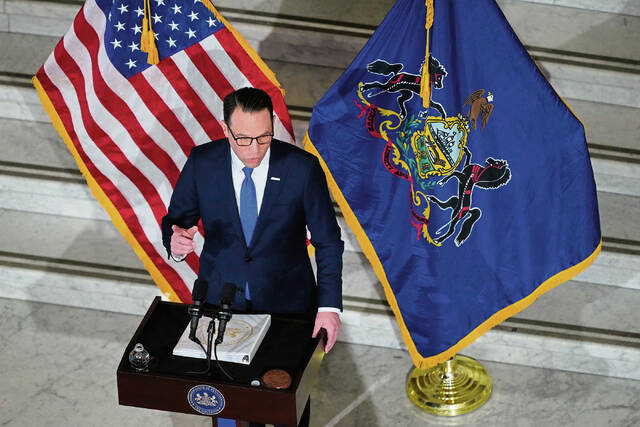Colin McNickle: The manifest danger in Shapiro’s budget
Pennsylvania Gov. Josh Shapiro proposed spending tens of millions of dollars in commonwealth reserves during this year’s budget address. He wants to disburse the dollars to bolster spending on everything from economic development efforts, to public transit and public education, the courts forcing his hand on the latter.
Shapiro has been particularly incensed that that a number of neighboring states — Ohio, New York and New Jersey, in particular — regularly outbid the Keystone State in landing new businesses and industries.
He wants to up Pennsylvania’s game, so to speak, and focus on how best to aid the state’s agriculture, energy, life sciences, manufacturing, robotics and technology sectors.
But as Frank Gamrat, executive director of the Allegheny Institute for Public Policy, warns, the taxpayer-filled pots of gold sitting in the state Treasury could be turned into empty pots given the crunched numbers on the ground.
“In spite of the higher spending aspirations from the governor’s budget address, the growth to general fund revenues to pay for them has mostly cooled,” Gamrat notes.
The Ph.D. economist says for fiscal year 2022-23, total general fund revenues were down from the previous fiscal year, as were personal income tax collections. The sales and use tax revenue was flat as inflation has slowed somewhat.
“The only growth was in the smallest component, corporate net income tax collections,” Gamrat says. “Through the first six months of the current fiscal year, they are slightly ahead of FY 2022-23.”
Shapiro could be falling into a trap of the federal government’s “beneficence.” The think tank scholar reminds that while paying for these programs with any accumulated surplus might sound promising, “once a program is begun, what happens when the surplus is drawn down?”
Can you say “tax increases” to maintain such increased spending?
“There is only a surplus because of the high tax collections post-pandemic, in large part due to the heavy infusion of federal government cash,” Gamrat notes in a point of order all too often lost on state government almsgivers.
“But those collections have cooled over FY 2022-23 and into the first half of FY 2023-24,” he says. “It is unlikely to reach that immediate post-pandemic pace in the next few years.”
Indeed, Pennsylvania and neighboring Northeast states are badly trailing the gains in economic activity to Southeast states.
“These northeastern states are historically unwelcoming to businesses through high taxes, regulatory controls, like the Regional Greenhouse Gas Initiative (RGGI) and are union strongholds,” Gamrat reminds.
But Pennsylvania must be a more welcoming state for all business as has been done in those high-growth southeastern states.
“Some obvious steps to take include Pennsylvania adopting Right-to-Work, ditching controls like RGGI and eliminating the right of teachers and transit workers to strike.
“But given the fealty to unions, that is unlikely to happen and Pennsylvania will continue to lag states enjoying strong economic gains,” Gamrat concludes.
Colin McNickle is communications and marketing director at the Allegheny Institute for Public Policy and can be reached via email.
Remove the ads from your TribLIVE reading experience but still support the journalists who create the content with TribLIVE Ad-Free.

